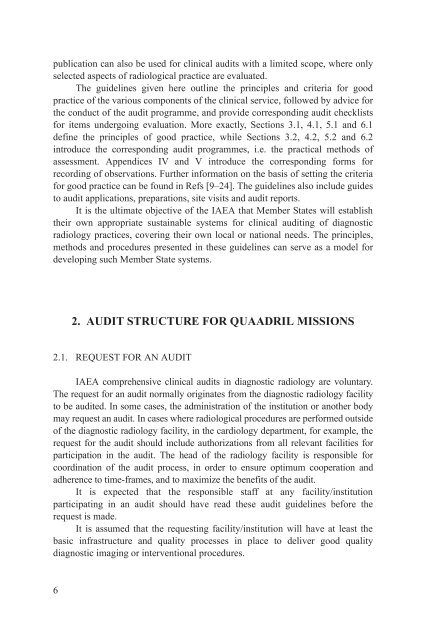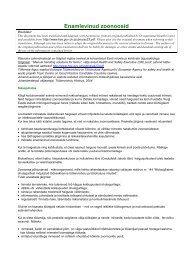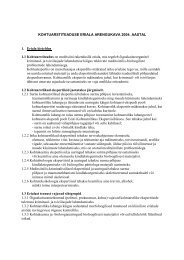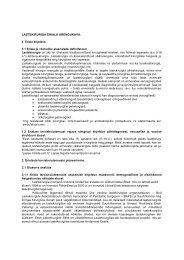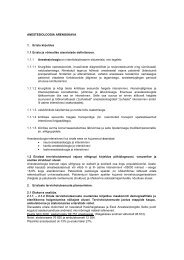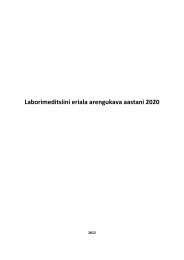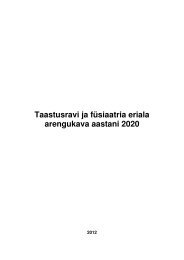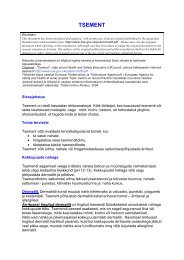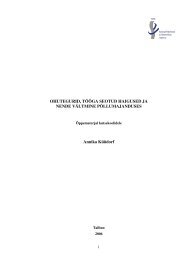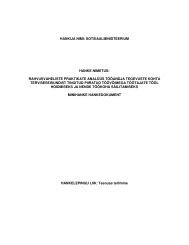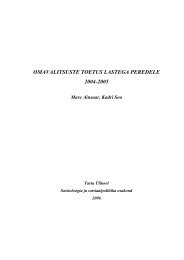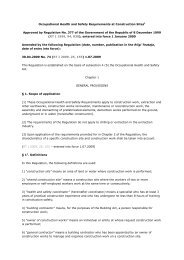SErIES IAEA HumAn HEAltH SErIES IAEA Hum
SErIES IAEA HumAn HEAltH SErIES IAEA Hum
SErIES IAEA HumAn HEAltH SErIES IAEA Hum
You also want an ePaper? Increase the reach of your titles
YUMPU automatically turns print PDFs into web optimized ePapers that Google loves.
publication can also be used for clinical audits with a limited scope, where only<br />
selected aspects of radiological practice are evaluated.<br />
The guidelines given here outline the principles and criteria for good<br />
practice of the various components of the clinical service, followed by advice for<br />
the conduct of the audit programme, and provide corresponding audit checklists<br />
for items undergoing evaluation. More exactly, Sections 3.1, 4.1, 5.1 and 6.1<br />
define the principles of good practice, while Sections 3.2, 4.2, 5.2 and 6.2<br />
introduce the corresponding audit programmes, i.e. the practical methods of<br />
assessment. Appendices IV and V introduce the corresponding forms for<br />
recording of observations. Further information on the basis of setting the criteria<br />
for good practice can be found in Refs [9–24]. The guidelines also include guides<br />
to audit applications, preparations, site visits and audit reports.<br />
It is the ultimate objective of the <strong>IAEA</strong> that Member States will establish<br />
their own appropriate sustainable systems for clinical auditing of diagnostic<br />
radiology practices, covering their own local or national needs. The principles,<br />
methods and procedures presented in these guidelines can serve as a model for<br />
developing such Member State systems.<br />
2. AUDIT STRUCTURE FOR QUAADRIL MISSIONS<br />
2.1. REQUEST FOR AN AUDIT<br />
<strong>IAEA</strong> comprehensive clinical audits in diagnostic radiology are voluntary.<br />
The request for an audit normally originates from the diagnostic radiology facility<br />
to be audited. In some cases, the administration of the institution or another body<br />
may request an audit. In cases where radiological procedures are performed outside<br />
of the diagnostic radiology facility, in the cardiology department, for example, the<br />
request for the audit should include authorizations from all relevant facilities for<br />
participation in the audit. The head of the radiology facility is responsible for<br />
coordination of the audit process, in order to ensure optimum cooperation and<br />
adherence to time-frames, and to maximize the benefits of the audit.<br />
It is expected that the responsible staff at any facility/institution<br />
participating in an audit should have read these audit guidelines before the<br />
request is made.<br />
It is assumed that the requesting facility/institution will have at least the<br />
basic infrastructure and quality processes in place to deliver good quality<br />
diagnostic imaging or interventional procedures.<br />
6


